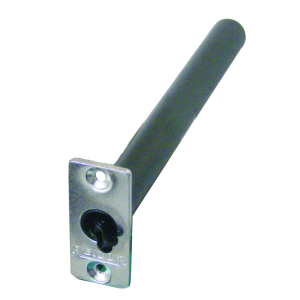Installing concealed door closers - tips & best practices
Door closers carry out an important purpose when it comes to building design. They ensure a door closes automatically once opened, and in a controlled manner, which helps with health and safety, security, energy efficiency and noise control. There are many different types of door closer on the market, and popular models are the overhead door closer and the surface mounted door closer, but an increasingly common type is the concealed door closer.
What is a concealed door closer?
The concealed door closer is a much more simple design than a more traditional model, and is designed to be fitted in either the door, the door frame or the floor. These are different to a more traditional model in that they are intended to be concealed from view to create a neater and more aesthetically pleasing finish. For this reason they are commonly used in modern homes and office buildings, and in commercial operations that are very much design-led, such as hotels, hospitality venues and retail stores. Concealed door closers also reduce the possibility of damage and vandalism, and hence they are also popular in schools, hospitals and even prisons.
Ultimately the concealed door closer has the same function as any other type of door closer, it automatically closes the door and controls the speed of doing so, but in this case is more discreet in its appearance.
Different types of concealed door closer
An overhead door closer can be fitted into the overhead section of a door frame, such as in the top jamb. This provides a seamless appearance. Other door closers can be fitted into the door leaf, so it is completely invisible when the door is closed. These are the most commonly found types of concealed door closer. Concealed door closers that are fitted into the floor are very popular when fitting a glass door, as it leaves the door completely free of any mechanism, which of course would be visible through the glass. Floor mounted door closers use a spring method, where the door is controlled by a spring and chain.
How to install a concealed door closer
While there are many different types of door closer and installation is slightly different for all of them, one tip that is relevant to all types of concealed door closer is that precision is needed. It is essential that you get measurements correct and that brackets are correctly mounted, because anything that is even a few millimetres out will result in the door not closing properly. If the door doesn’t latch properly or sits slightly in the ‘open’ position, this can cause a security problem, an energy efficiency problem and could be a fire risk.
The most common type of concealed door closer is the chain and cylinder design. This is a very simple design whereby a long cylinder contains a chain inside it. The cylinder is fitted into the door itself while the chain is attached to the cylinder as well as a bracket fitted into the door frame. The chain then controls the action of closing the door and the tension created ensures this happens every time the door is opened. Installation of this system usually works like this:
- Attach the backing plate to the inside section of the door frame
- Drill a hole into the side of the door to accommodate the full length of the cylinder
- Pull the chain out to create the tension you need and attach the bracket to the backing plate in the door frame
Although this is a relatively simple process, there is quite a lot to consider and some important tips to take on board:
- Secure the door - Always secure the door in place with some kind of stopper so it doesn’t move while you are working on it.
- Location for control - The door closer needs to be located close to at least one of the door hinges to ensure it has as much power and control over the door’s movement as possible.
- Location to prevent damage - Don’t locate the door closer where drilling the hole might interfere with any detail on the surface of the door. This usually means locating the door closer on the top or the bottom of the door. For ease of working and maximum effectiveness, locating at the bottom of the door is probably best.
- Mounting recesses - Chisel mounting locations in the door edge and door frame very carefully, ensuring you create enough space for all the screws and the shape of the bracket.
- Drill sizes - Choose the correct drill bit for creating the cylinder recess in the door, with the narrow width of the door you obviously don’t have much room to play with and damaging the door is the last thing you want to do.
- Cylinder recess - Drill the cylinder recess slowly and carefully ensuring you keep the hole straight, so you don’t damage the door.
- Door tension - Creating the right tension in the chain is done by tightening and loosening the screws in the bracket attached to the chain. There is an element of trial and error about this, and it can take some time, but is essential in getting the installation right and not leaving the door unlatched, or in the other extreme, making the door slam shut.
Order your concealed door closer online with MB Direct
At MB Direct we have a wide range of door closers to choose from, including concealed door closers. You can choose the design that suits your location and application, and order online today.